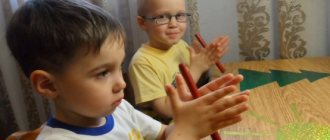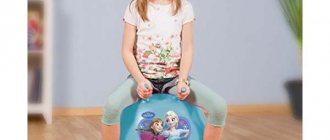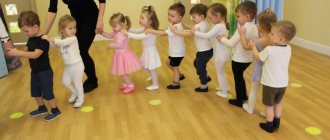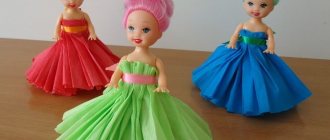Slide captions:
MUNICIPAL PRESCHOOL EDUCATIONAL INSTITUTION Kindergarten No. 26, Achinsk SEMINAR Finger games - for what? .
Relevance Purposeful and systematic work on the development of fine motor skills in preschool children contributes to the formation of intellectual abilities, speech activity, and most importantly, the preservation of the child’s mental and physical development. A person cannot develop a comprehensive understanding of the surrounding objective world without tactile-motor perception, since it underlies sensory cognition. The level of development of fine motor skills is one of the indicators of intellectual readiness for school, and it is in this area that preschoolers experience serious difficulties.
Goal: to reveal the relevance of the development of fine motor skills through finger games. Consider the features of finger games: meaning, types and requirements. Create conditions for the inclusion of all teachers in active activities. Give teachers the opportunity to independently complete the task of the master in conducting finger games. Tasks:
Origins Friedrich Froebel German teacher, theorist of preschool education, creator of the concept of “kindergarten”. He proposed and introduced finger games. Invented the first children's mosaic, as well as many other children's educational games.
The importance of developing fine motor skills through finger games Hand movements are the basis for developing self-care skills in children. The level of development of fine motor skills is one of the important indicators of a child’s readiness for school. 3. Movements of the fingers affect the development of the motor function of speech and stimulate the development of other mental functions - thinking, memory, attention.
“A child’s mind is at his fingertips” V.A. Sukhomlinsky “Children’s talents are at their fingertips” M.M. Montessori
Finger games are the staging of any rhymed stories or fairy tales using the fingers. Finger games with objects Active games with poetic accompaniment Games of manipulation Finger kinesiological games Finger games with elements of self-massage
they develop thinking, increase muscle elasticity, cause positive emotions and persistent interest in activities. (for example: pencils, clothespins, sticks...) Types of finger games Finger games with objects
Types of finger games Children can pronounce and perform finger movements both in their free time and in educational activities. Active games with poetic accompaniment. One, two, three, four, five The little fingers went out for a walk. One, two, three, four, five They hid in the house again.
Types of finger games A child can perform such games independently or with the help of an adult. They develop imagination: in each finger the child sees one or another image. Games of manipulation.
Types of finger games Such complexes of finger games can increase overall tone, develop attention and memory, and relieve psycho-emotional stress. Finger games based on fairy tales
Types of finger games Such games allow you to activate interhemispheric interaction, improve mental activity, resistance to stress, and help improve memory and attention. Finger kinesiology games
Types of finger games Traditional massage movements are used - kneading, rubbing, pressing, pinching - such movements are performed from the periphery to the center. Finger games with elements of self-massage
“Hands give a person a head, then a wiser head teaches hands, and skillful hands again contribute to the development of the brain” I.P. Pavlov Thank you for your attention!
Sources: M.G. Borisenko, N.A. Lukina “Our fingers play” (development of fine motor skills from 0 to 3 years) V. Tsvintarny “We play with our fingers and develop speech” O.N. Novitskaya “Funny finger games” (Moscow “Astrel”, 2001) Ns portal.
Finger games as a means of speech development Educator Ostashko R.V. - presentation
Finger games as a means of speech development Educator Ostashko R.V.
Over the past few years, the level of speech development of children has noticeably decreased. Why? Parents talk less with their children; many of them are busy at work. Children themselves speak less because they watch and listen more (TV-audio-video...). They rarely do anything with their own hands, because modern toys and things are designed as conveniently as possible, but are not effective for the development of motor skills (clothes and shoes with Velcro instead of laces and buttons, books and manuals with stickers instead of pictures for cutting out, etc. )
Scientists have established in the process of research that the development of a baby’s speech begins only after subtle movements of the fingers reach a certain level of development, i.e. the development of fine motor skills prepares the corresponding areas of the brain for the formation of speech. Fine motor skills interact not only with speech, but also with thinking, attention, coordination of movements and spatial perception, observation, imagination, visual and motor memory. The development of fine motor skills is a source of accelerated improvement in speech, thinking and mental development. Therefore, training the movements of the fingers and hands is the most important factor stimulating the child’s speech development, helping to improve articulatory movements, preparing the hand for writing and, no less important, a powerful tool that increases the performance of the cerebral cortex, stimulating the development of the child’s thinking.
The so-called “finger games” provide very good training for finger movements. These games are very emotional and exciting, promoting the development of creative activity. “Finger games” reflect the world around us - objects, animals, people, their activities, natural phenomena.
1. Manipulative games. 2. Plot-finger exercises. 3. Finger exercises in combination with sound gymnastics. 4. Finger kinesiological exercises (“brain gymnastics”). 5. Finger exercises combined with self-massage of the hands and fingers. 6. Theater in hand.
The child can perform these exercises independently or with the help of an adult. They develop imagination: in each finger the child sees one or another image. “Okay, okay” “Magpie-white-sided” “Finger-boy, where have you been?” “We shared an orange” “This finger is grandpa” “One, two, three, four, who lives in my apartment” “Fingers go walk "
This group also includes exercises that allow children to depict objects of transport and furniture, wild and domestic animals, birds, insects, trees, etc. “Fingers say hello” “A flower is blooming”
The child can alternately connect the fingers of each hand to each other, or straighten each finger in turn, or clench his fingers into a fist and unclench and at this time pronounce the sounds: b-p; etc; k-g.
. With the help of such exercises, the work of the left hemisphere is compensated. Their implementation requires attention and concentration from the child. “Fist - edge - palm” “Ring” “Ear-nose” “Symmetrical drawings” “Horizontal figure eight”
These exercises use traditional massage movements - kneading, rubbing, pressing, pinching “We put on gloves” “Wash our hands under a hot stream of water” “Pickling cabbage” “Warm our hands” “Hammer” “Geese are nibbling the grass”
Allows you to increase overall tone, develop attention and memory, relieve psycho-emotional stress. “Fairy Tale” - children are invited to act out a fairy tale in which each finger is a character.
Finger games should begin with warming up and stroking the hands and fingers for 2-3 minutes. Before playing a game, you need to discuss its content with your child, immediately practicing the necessary gestures, finger combinations, and movements. This will not only prepare the child for the correct execution of the game, but will also create the necessary emotional mood. Particular attention must be paid to creating a playful image, which is an important element of finger games. In the process of finger games, it is important to demonstrate your own passion for the game. When performing finger games, you need to squeeze your fingers energetically, hum or pronounce rhythmically. You need to move your hands and fingers in time with the words. This will ensure the maximum effect of the classes and, as a result, clear coordination between the speech and motor centers, which is very useful for speech development. Classes using finger games should be based on the principle of gradually replacing games with new ones. After finger games, it is recommended to play games aimed at relaxing the hands.
We can conclude that the use of finger games helps children not only develop speech and increase vocabulary, but also: Develop memory Develop attention Develop imagination Show creativity Prepare the hand for writing
“Hands teach the head, then the wiser head teaches the hands, and skillful hands again contribute to the development of the brain” Pavlov I.P.
MAGAZINE Preschooler.RF
The more skill in a child’s hand, the smarter the child (V. A. Sukhomlinsky) The role of finger gamesDuring “finger games,” children, repeating the movements of adults, activate hand motor skills. This develops dexterity, the ability to control one’s movements, and concentrate attention on one type of activity. “Finger games” are the staging of any rhymed stories or fairy tales using the fingers. Many games require the participation of both hands, which allows children to navigate the concepts of “right”, “left”, “up”, “down”, etc.
The child's brain absorbs a huge amount of information. If any of its functions is not developed in a timely manner, then in the future it will be impossible to catch up. Brain development very much depends on the child’s motor activity, especially on the movements of the fingers (that is, on fine motor skills). Children who regularly engage in finger exercises learn to write faster, speak better, have good memory, and develop coordination, strength and dexterity. Research by scientists has proven that the level of development of children's speech is directly dependent on the degree of formation of fine movements of the fingers.
Simple hand movements help remove tension not only from the hands themselves, but also from the lips, and relieve fatigue. They can improve the pronunciation of many sounds, and therefore develop the child’s speech. In the process of my work, I noticed that children with insufficiently developed speech are increasingly entering kindergarten. Finger Theater
finger theater is an exciting didactic game that: stimulates the development of fine motor skills; introduces the child to such concepts as shape, color, size; helps develop spatial perception (concepts: right, left, next to each other, etc.); develops imagination, memory, thinking and attention; helps develop vocabulary and activates speech functions; develops creative abilities and artistic skills; introduces basic mathematical concepts;
TURTLE
Here is my turtle, she lives in a shell. She loves her home very much. When she wants to eat, she sticks her head out. When he wants to sleep, he hides it back. Hands clenched into fists, thumbs inside. Then show your thumbs and hide them back.
MY FAMILY
This finger is grandpa, This finger is grandma, This finger is daddy, This finger is mommy, This finger is me, That’s my whole family! Alternately bend the fingers, starting with the thumb. When finished, twist with your fist.
FIVE FINGERS
There are five fingers on my hand, five grippers, five holders. To plan and to saw, To take and to give. It's not difficult to count them: One, two, three, four, five!
WE DRAW
We painted today, Our fingers are tired. Let's shake our fingers and start drawing again. Smoothly raise your arms in front of you and shake your hands. My theater
I made this finger theater from felt. There are three options for the game: put it on your fingers, apply it to the flannelgraph (the felt sticks very well to the flannel in a vertical position) and show it from behind the screen. The drawing is made on felt with a special indelible waterproof thin felt-tip pen.
| Next > |
Finger gymnastics Performed by: Levshchanova E.V. - presentation
Finger gymnastics Performed by: Levshchanova E.V.
1. Before the game, you can discuss its content with your child. This will not only prepare him for the correct execution of the exercise, but will also create the necessary emotional mood. 2. Before starting the exercises, children warm up their palms with light strokes until they feel pleasantly warm. 3. All exercises are performed at a slow pace, from 3 to 5 times, first with the right hand, then with the left, and then with both hands together. 4. Do the exercise with your child, while demonstrating your own passion for the game. 5. When performing exercises, it is necessary to involve, if possible, all fingers of the hand. 6. It is necessary to ensure the correct placement of the hand and precise switching from one movement to another. Rules for doing the exercises:
7. It is necessary to ensure that all exercises are performed by the child easily, without excessive strain on the arm muscles, so that they bring him joy. 8. All instructions are given in a calm, friendly tone, clearly, without unnecessary words. If necessary, the child is provided with assistance. 9. Ideally, each lesson has its own name, lasts a few minutes and is repeated 2-3 times during the day. 10. When playing the game repeatedly, children often begin to pronounce the text partially (especially the beginning and ending of phrases). Gradually, the text is learned by heart, children pronounce it in its entirety, correlating the words with the movement.
11. Having chosen two or three exercises, gradually replace them with new ones. You can keep the games you like most in your repertoire and return to them at the child’s request. 12. Do not give your child several complex tasks at once (for example, showing movements and pronouncing text). Children have a limited attention span, and an impossible task can “discourage” interest in the game. 13. Never force. Try to understand the reasons for the refusal, if possible, eliminate them (for example, by changing the task) or change the game.
Fingers sunbathe. Five fingers on your hand Call by name sumey, The first finger - the side one - is called BIG. Your third finger is right in the middle, so MIDDLE is given a name. The second finger is a diligent pointer. It’s not for nothing that they call it the INDEX. The fourth finger is called RINGLESS. He is clumsy and stubborn, just like in the family, the younger brother is the favorite, he is the fifth in a row, called LITTLE FINGER. Place the spread fingers of both hands on the table. When naming each finger, lift it one by one.
My family This finger is grandpa, This finger is grandma, This finger is daddy, This finger is mommy, This finger is me, That’s my whole family! Alternately bend the fingers on both hands, starting with the thumb, to the last line - show your palms.
LET'S PLAY FINGERS For Bolshak to chop the wood, And for you to carry the wood, And for you to heat the oven, And for you to knead the dough, And for the baby to sing songs. Sing songs and dance, amuse siblings. Bend all fingers on both hands in turn. On the last lines - move the fingers of both hands
The fingers went out for a walk. One, two, three, four, five. The fingers went out for a walk. One, two, three, four, five. They hid in the house again. For the first lines, alternately extend the fingers from the fists, starting with the thumb. For the next lines, alternately bend your fingers into fists, starting with the little finger.
WE WRITTEN We wrote, we wrote, Our fingers were tired. You jump, little fingers, like sunbeams. Jump-jump, jump-jump, They galloped onto the meadow. The wind shakes the grass, tilts it left and right. Don't be afraid of the wind bunny, have fun on the lawn. For the first two lines, rhythmically clench and unclench your fists. On the third line - (jump) your fingers on the table. For the next two lines— (jump) on the table. Then - light movements with your hands to the right and left. For the last one, wave the fingers of both hands.
A horned goat is coming. A rich goat is coming, with its legs stomping and stomping! Eyes clap-clap! He who does not eat porridge, does not drink milk, is gored by the goat, gored. In the first two lines, use your right hand to depict horns, extending your index finger and little finger forward. On the third line, hit the table or knees with the fingertips of both hands. On the fourth line - clap your hands.
Mouse The mouse snuck into the hole and locked it with a padlock. He looks through the hole - The cat isn’t running? On the first line - “walk” with two fingers on the table, depicting creeping movements; on the second - connect your fingers (“chains”); on the third, make a ring and look into it; on the fourth - bring your right hand, palm down, to your forehead and look from under it.
Turtle Turtle, turtle lives in a shell. He sticks his head out and puts it back. For the first two lines, put your fists on the table, you can gently tap them; on the third - stick out your index fingers; on the fourth, put it back.
Bunnies Bunnies scattered across the forest lawn. These are the kind of bunnies, Runaway bunnies. The bunnies sat in a circle, digging a root with their paws. These are the kind of bunnies, Runaway bunnies. On the first line - circular movements with your hands, palms down; on the second - “run” across the table with the index and middle fingers of both hands; on the third - hands in front of the chest (hare's paws); on the fourth - hands on the head (hare ears); on the fifth - draw a circle in the air with both palms; on the sixth - palms down, bend and straighten your fingers (the bunny digs a root); on the seventh and eighth - the same as on the third and fourth.
TO THE MEADOW Little bunnies came to the meadow, Little bears, little badgers, Little frogs and a raccoon, To the green meadow, Come too, my friend! Bend your fingers into a fist to the rhythm of the nursery rhyme. When listing animals, bend the fingers on both hands alternately.
Feed the horse With one hand I pick up grass, With the other hand I also pick up grass. I'll feed the horse grass. That's how many fingers I have. On the first line - grasping movements with the left hand, on the second line - with the right. On the third line, the arms are extended forward, palms up; on the fourth - they are shown.
CAT AND DOGS The kitty came forward and played with her tail. Dogs run out of the gate to meet her. On the first line - the index finger and little finger of the right hand are straightened (the ears of a cat), the remaining fingers are pressed to the palm, with the thumb pressed to the middle finger. On the second, wave your left palm at the base of your right hand (tail). On the third, raise the thumbs of both hands up, with the inner sides of the palms facing you, the remaining fingers are folded together in a horizontal position, the tips of the middle fingers touching. On the fourth - the index fingers and little fingers of both hands are raised up, the remaining straight fingers are connected together, with a pinch (dogs)
House and gate There is a house in a clearing, but the path to the house is closed. We are opening the gates. We invite you to this house. Connect the fingers of both hands at an angle to each other. On the second line, raise the thumbs of both hands up, turn the inner sides of the palms towards you, the remaining fingers in a horizontal position together; the tips of the middle fingers touch. On the third line, spread your palms to the sides. For the fourth - the same as for the first.
FINGER - BOY Finger-boy, where have you been? I went to the forest with this brother, I cooked cabbage soup with this brother, I ate porridge with this brother, I sang songs with this brother. On the first line, show your thumbs on both hands. Then connect them one by one with the rest of your fingers.
Washing We washed the clothes, rinsed them in the river, wrung them out, hung them up - That’s how fun it became! On the first line - rub one fist against the other; on the second - move your palms left and right; on the third - clench and unclench your fists, imitate movements, hanging clothes; on the fourth - circular movements with the hands, palms up, fingers spread to the sides (flashlights).
We're building a house I'm knocking and knocking with a hammer, I'm hammering in a hundred nails. I will build a house, a house, We will live in it, in it. On the first line - tap with the fist of your right hand on the outstretched palm of your left hand; on the second - the same movement. But change hands; on the third - alternately place cam on cam; on the fourth - raise your palms, join your fingers, depicting the roof of a house.
FIVE FINGERS There are five fingers on my hand, Five grabbers, five holders, To plan and to saw, To take and to give, It’s not difficult to count them; One two three four five! Rhythmically clench and unclench your fists. On the count, alternately bend the fingers on both hands.
KNOCK-KNOCK Like a typewriter Two pretty pigs, KNOCK-KNOCK-KNOCK! Tukitukituk! And they tap and grunt: Gruntsgruntsgruntsgrunt, Gruntsgruntsgruntsgrunt. Tap rhythmically (syllable by syllable) with your fingers, imitating typing. Knock with your fist.
PIES I bought butter, sugar and flour, half a kilo of raisins, a pack of cottage cheese. I bake and bake pies. I'm waiting for all my friends to visit. On the first four lines, bend your fingers one by one, listing the products; on the fifth line - imitate the modeling of pies; on the sixth - palms forward, imitate movements inviting guests.








